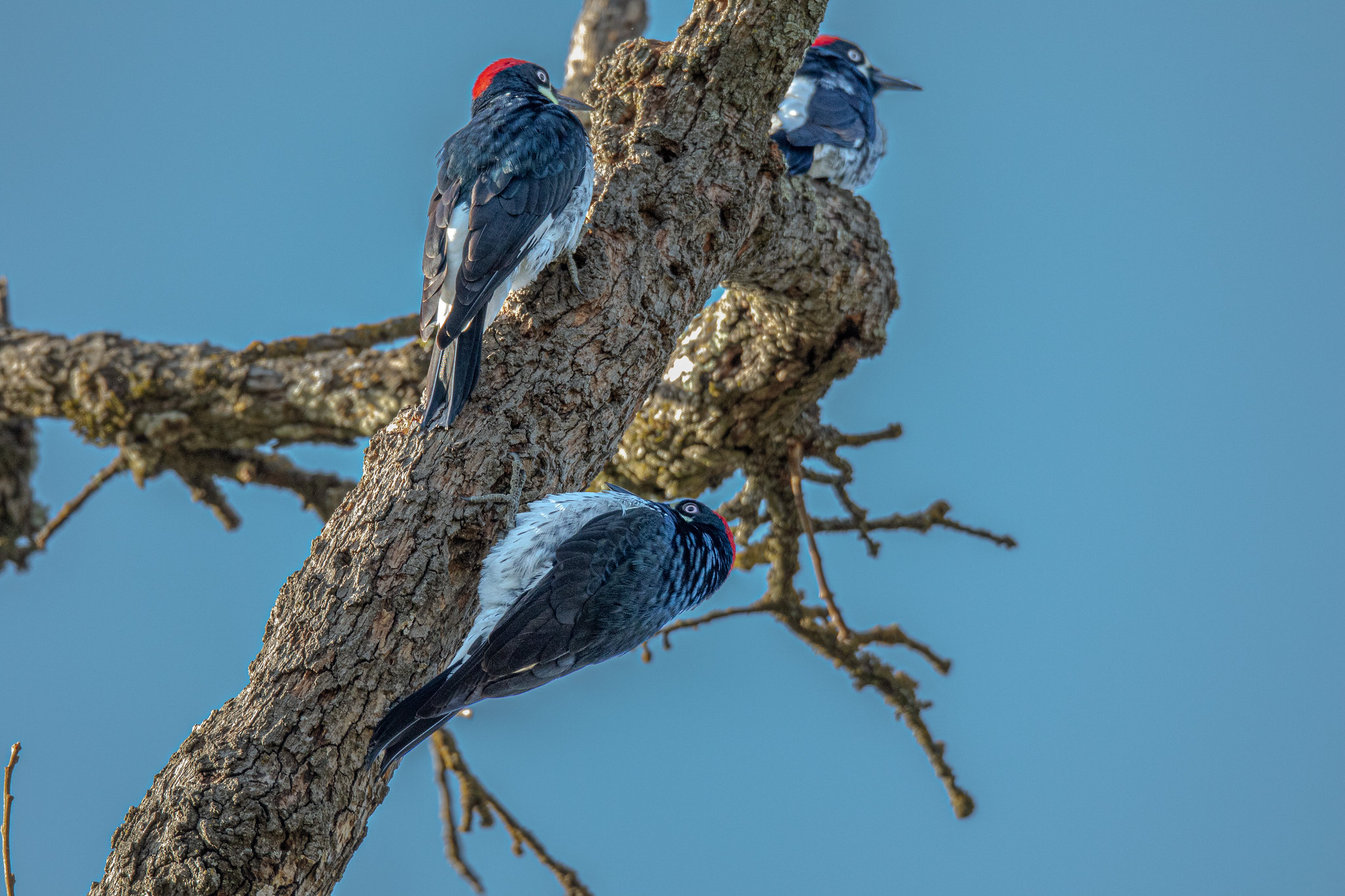

Work with private landowners to maintain and restore oak woodlands with open understories, especially in large patches. Improve understanding of nesting ecology, especially nest site requirements. Reminiscent of a troupe of wide-eyed clowns, Acorn Woodpeckers live in large groups in western oak woodlands. Acorn Woodpeckers also compete with European Starlings ( Sturnus vulgaris) for nesting cavities in some areas. Density, nest-site and roost-site characteristics, home-range, habitat-use, and behavior of white-headed. Remaining birds persist locally and in small numbers. Acorn Woodpecker - Natureserve Global Rank: G5. Every fall they stash as many as thousands of acorns in holes drilled into dead tree stumps in preparation for winter. Loss of oak woodlands, particularly in the Willamette Valley, poses a major threat to Acorn Woodpeckers and other oak habitat specialists. Acorn woodpeckers are renowned food hoarders. They are dependent upon dead limbs or snags for storing acorns. It has the fastest-growing human population in the state resulting in challenges due to land-use changes.Īcorn Woodpeckers prefer oak woodlands with high canopies and relatively open understories. This long mostly level alluvial plain has some scattered areas of low basalt, and contrasts with productive farmland and large urban areas. As shown by the National Audubon Society’s climate scenarios map, an increase of +3 degrees Celsius could result in population loss across part of the species’ range, but climate change might provide favorable conditions elsewhere.The Willamette Valley ecoregion is bounded on the west by the Coast Range and on the east by the Cascade Range. In addition to loss or degradation of mature oak trees, other threats to present population levels include slow oak forest regeneration, the introduction of European Starlings and–depending on location–a warming climate. Habitat/Range/ Migration: Acorn Woodpeckers occur in areas with mature Live Scrub Oak trees particularly in transition zones between oak plant communities. While Washington’s populations are considered critically imperiled by Nature Serve, it is not a state-listed species since it is considered a peripheral species due to range expansion. Nature Serve’s overall species ranking is G5 (secure) but they rank the species as vulnerable in Oregon. The Oregon Department of Fish and Wildlife lists Acorn Woodpeckers as a sensitive species in the Willamette Valley and Klamath Mountains due to conversion and loss of oak habitats. This is a social species and groups of these birds often store acorns in trunks of trees for later use.

As a species highly associated with oak habitats, there is concern for the species within regional or local areas and ongoing habitat loss and other environmental change elevate concerns about the species. While not the only bird species to utilize or store acorns, this species certainly takes it to the extreme!Įven with a global breeding population estimated at 5 million birds, there is still a need to conserve this iconic woodpecker. According to the Cornell Lab of Ornithology, these storage areas may have up to 50,000 acorn holes in them.īird Note also tells us that utility poles, fence posts, or the sides of barns will do in a pinch when a tree isn’t available. They spend a significant amount of their time associated with granary trees–trees in which they bore holes or use natural notches and cracks to store acorns.

While other woodpeckers are usually seeking insects when they drill into trees, the Acorn Woodpecker feeds mostly on flying or terrestrial insects, seeds, and fruits as well as high-caloric acorns which they store for winter. The behaviour of acorn woodpeckers was compared in two locations (New Mexico and California) to test the hypothesis that saturation of the habitat by. In a win-win arrangement, the woodpeckers are also helping distribute acorns that may seed new oak trees. Habitat Open Woodlands Acorn Woodpeckers live year-round in oak and pine-oak woodlands of western Oregon, California, and the Southwest through. Each female lays about 5 eggs, but clutches with more than one laying female can have up to 17 eggs. All eggs are laid in a single nest, which is excavated by both breeders and helpers. The rest of the group do not breed but help raise the young. In California and Oregon, and slightly into Washington, they are associated with oaks in the genus Quercus, often the Oregon white oak or the black oak. They prefer oak woodlands with a more open understory and rely on mature oaks for both food storage and nest sites. Each group of Acorn Woodpeckers has 1 to 7 breeding males and 1 to 3 breeding females. The Acorn Woodpecker is an oak woodland specialist, relying on oaks for food, shelter and nest cavities.


 0 kommentar(er)
0 kommentar(er)
